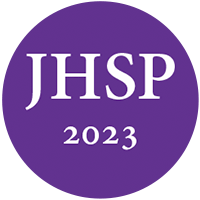The professional home for health service psychologists.
Join a community of 15,000 psychologists and trainees.
Learn it today. Apply it tomorrow.
Connecting you to what you need in your career.
Making a difference.
Staley Shumaker, B. E. & Hoyt, T. (2020). A Place for Psychological Testing in the Assessment of Adult ADHD. Journal of Health Service Psychology, 46(3). https://doi.org/10.1007/s42843-020-00016-z
Attention-deficit/hyperactivity disorder (ADHD) is a neurodevelopmental disorder characterized by symptoms of inattention, impulsivity, and hyperactivity that interfere with social, occupational, or academic functioning. Clinical communities differ regarding whether or not formal psychological or neuropsychological assessment is necessary for diagnosing ADHD. A comprehensive assessment model that emphasizes differential clinical diagnosis is recommended. This model provides practice guidelines that ensure accurate diagnosis when faced with potential complicating factors, such as symptom overlap, substance abuse, and symptom feigning.
Access continuing education course on CE.NationalRegister.org
Agnew-Blais, J. C., Polanczyk, G. V., Danese, A., Wertz, J., Moffitt, T. E., & Arseneault, L. (2016). Evaluation of the persistence, remission, and emergence of attention-deficit/hyperactivity disorder in young adulthood. JAMA Psychiatry, 73(7), 713–720. https://doi.org/10.1001/jamapsychiatry.2016.0465
Almagor, D., Duncan, D., & Gignac, M. (Eds.). (2020). Canadian ADHD practice guidelines (4.1 ed.). Canadian ADHD Resource Alliance.
American Psychiatric Association. (2013). Diagnostic and statistical manual of mental disorders (5th ed.). Washington, DC: American Psychiatric Press.
Anastopoulos, A. D., DuPaul, G. J., Weyandt, L. L., Morrissey-Kane, E., Sommer, J. L., Rhoads, L. H., Murphy, K. R., Gormley, M. J., & Gudmundsdottir, B. G. (2018). Rates and patterns of comorbidity among first-year college students with ADHD. Journal of Clinical Child & Adolescent Psychology, 47(2), 236–247. https://doi.org/10.1080/15374416.2015.1105137
Baggio, S., Hasler, R., Giacomini, V., El-Masri, H., Weibel, S., Perroud, N., & Deiber, M.-P. (2020). Does the continuous performance test predict ADHD symptoms severity and ADHD presentation in adults? Journal of Attention Disorders, 24(6), 840–848. https://doi.org/10.1177/1087054718822060
Barkley, R. A. (2011). Barkley Adult ADHD Rating Scale—IV (BAARS–IV). New York: Guilford Press.
Ben-Porath, Y. S. (2012). Interpreting the MMPI-2-RF. Minnesota: University of Minnesota Press.
Blais, M., Baity, M., & Hopwood, C. (2010). Clinical Applications of the Personality Assessment Inventory. New York: Routledge.
Booksh, R. L., Pella, R. D., Singh, A. N., & Drew Gouvier, W. (2010). Ability of college students to simulate ADHD on objective measures of attention. Journal of Attention Disorders, 13(4), 325–338. https://doi.org/10.1177/1087054708329927
Caye, A., Rocha, T. B., Anselmi, L., Murray, J., Menezes, A. M. B., Barros, F. C., Gonҫalves, H., Wehrmeister, F., Jensen, C. M., Steinhausen, H.-C., Swanson, J. M., Kieling, C., & Rohde, L. A. (2016a). Attention-deficit/hyperactivity disorder trajectories from childhood to young adulthood: Evidence from a birth cohort supporting a late-onset syndrome. JAMA Psychiatry, 73(7), 705–712. https://doi.org/10.1001/jamapsychiatry.2016.0383
Caye, A., Spadini, A. V., Karam, R. G., Grevet, E. H., Rovaris, D. L., Bau, C. H. D., Rohde, L. A., & Kieling, C. (2016b). Predictors of persistence of ADHD into adulthood: A systematic review of the literature and meta-analysis. European Child & Adolescent Psychiatry, 25(11), 1151–1159. https://doi.org/10.1007/s00787-016-0831-8
Chamberlain, S. R., Ioannidis, K., Leppink, E. W., Niaz, F., Redden, S. A., & Grant, J. E. (2017). ADHD symptoms in non-treatment seeking young adults: Relationship with other forms of impulsivity. CNS Spectrums, 22(1), 22–30. https://doi.org/10.1017/S1092852915000875
Cheung, C. H. M., Rijdijk, F., McLoughlin, G., Faraone, S. V., Asherson, P., & Kuntsi, J. (2015). Childhood predictors of adolescent and young adult outcome in ADHD. Journal of Psychiatric Research, 62, 92–100. https://doi.org/10.1016/j.jpsychires.2015.01.011
Chung, W., Jiang, S.-F., Paksarian, D., Nikolaidis, A., Castellanos, F. X., Merikangas, K. R., & Milham, M. P. (2019). Trends in the prevalence and incidence of attention-deficit/hyperactivity disorder among adults and children of different racial and ethnic groups. JAMA Network Open, 2(11), e1914344. https://doi.org/10.1001/jamanetworkopen.2019.14344
Conners, C. K., Erhardt, D., & Sparrow, M. A. (1999). Conners’ Adult ADHD Rating Scales (CAARS). Multihealth Systems, Inc.
Conners, C. K. (2014). Conners Continuous Performance Test, 3rd Edition (Conners CPT 3). Pearson Clinical.
Cook, C. M., Bolinger, E., & Suhr, J. (2016). Further validation of the Conners Adult Attention Deficit/Hyperactivity Rating Scale Infrequency Index (CII) for detection of non-credible report of attention deficit/hyperactivity disorder symptoms. Archives of Clinical Neuropsychology, 31(4), 358–364. https://doi.org/10.1093/arclin/acw015
Danielson, M. L., Bitsko, R. H., Ghandour, R. M., Holbrook, J. R., Kogan, M. D., & Blumberg, S. J. (2018). Prevalence of parent-reported ADHD diagnosis and associated treatment among U.S. children and adolescents, 2016. Journal of Clinical Child & Adolescent Psychology, 47(2), 199–212. https://doi.org/10.1080/15374416.2017.1417860
Faraone, S. V., Biederman, J., & Mick, E. (2006). The age-dependent decline of attention deficit hyperactivity disorder: A meta-analysis of follow-up studies. Psychological Medicine, 36(2), 159–165. https://doi.org/10.1017/S003329170500471X
Faraone, S. V., & Doyle, A. E. (2001). The nature and heritability of attention-deficit/hyperactivity disorder. Child and Adolescent Psychiatric Clinics of North America, 10(2), 299–316. https://doi.org/10.1016/S1056-4993(18)30059-2
Fayyad, J., Sampson, N. A., Hwang, I., Adamowski, T., Aguilar-Gaxiola, S., Al-Hamzawi, A., Andrade, L. H. S. G., Borges, G., de Girolamo, G., Florescu, S., Gureje, O., Haro, J. M., Hu, C., Karam, E. G., Lee, S., Navarro-Mateu, F., O’Neil, S., Pennell, B.-E., Piazza, M., . . . Kessler, R. C. (2017). The descriptive epidemiology of DSM-IV adult ADHD in the World Health Organization World Mental Health surveys. ADHD Attention Deficit and Hyperactivity Disorders, 9(1), 47–65. https://doi.org/10.1007/s12402-016-0208-3
Finn, S. E., & Tonsager, M. E. (2002). How therapeutic assessment became humanistic. The Humanistic Psychologist, 30(1-2), 10–22. https://doi.org/10.1080/08873267.2002.9977019
Fuermaier, A. B. M., Tucha, O., Koerts, J., Send, T. S., Weisbrod, M., Aschenbrenner, S., & Tucha, L. (2018). Is motor activity during cognitive assessment an indicator for feigned attention-deficit/hyperactivity disorder (ADHD) in adults? Journal of Clinical and Experimental Neuropsychology, 40(10), 971–986. https://doi.org/10.1080/13803395.2018.1457139
Gordon, C. T., & Fabiano, G. A. (2019). The transition of youth with ADHD into the workforce: Review and future directions. Clinical Child and Family Psychology Review, 22(3), 316–347. https://doi.org/10.1007/s10567-019-00274-4
Green, P. (2008). Nonverbal Medical Symptom Validity Test.
Green’s Publishing.
Harp, J. P., Jasinski, L. J., Shandera-Ochsner, A. L., Mason, L. H., & Berry, D. T. R. (2011). Detection of malingered ADHD using the MMPI-2-RF. Psychological Injury and Law, 4(1), 32–43. https://doi.org/10.1007/s12207-011-9100-9
Hinshaw, S. P., Scheffler, R. M., Fulton, B. D., Aase, H., Banaschewski, T., Cheng, W., Mattos, P., Holte, A., Levy, F., Sadeh, A., Sergeant, J. A., Taylor, E., & Weiss, M. D. (2011). International variation in treatment procedures for ADHD: Social context and recent trends. Psychiatric Services, 62(5), 459–464. https://doi.org/10.1176/ps.62.5.pss6205_0459
Hiscock, M., & Hiscock, C. K. (1989). Refining the forced-choice method for the detection of malingering. Journal of Clinical and Experimental Neuropsychology, 11(6), 967–974. https://doi.org/10.1080/01688638908400949
Hoelzle, J. B., Ritchie, K. A., Marshall, P. S., Vogt, E. M., & Marra, D. E. (2019). Erroneous conclusions: The impact of failing to identify invalid symptom presentation when conducting adult attention-deficit/hyperactivity disorder (ADHD) research. Psychological Assessment, 31(9), 1174–1179. https://doi.org/10.1037/pas0000752
Inman, T. H., Vickery, C. D., Berry, D. T. R., Lamb, D. G., Edwards, C. L., & Smith, G. T. (1998). Development and initial validation of a new procedure for evaluating adequacy of effort given during neuropsychological testing: The letter memory test. Psychological Assessment, 10(2), 128–139. https://doi.org/10.1037/1040-3590.10.2.128
Katzman, M. A., Bilkey, T. S., Chokka, P. R., Fallu, A., & Klassen, L. J. (2017). Adult ADHD and comorbid disorders: Clinical implications of a dimensional approach. BMC Psychiatry, 17, 302. https://doi.org/10.1186/s12888-017-1463-3
Kessler, R. C., Adler, L., Barkley, R., Biederman, J., Conners, C. K., Demler, O., Faraone, S. V., Greenhill, L. L., Howes, M. J., Secnik, K., Spencer, T., Ustun, B., Walters, E. E., & Zaslavsky, A. M. (2006). The prevalence and correlates of adult ADHD in the United States: Results from the National Comorbidity Survey Replication. American Journal of Psychiatry, 163(4), 716–723. https://doi.org/10.1176/ajp.2006.163.4.716
Kooij, J. J. S., Bijlenga, D., Salerno, L., Jaeschke, R., Bitter, I., Balazs, J., Thome, J., Dom, G., Kasper, S., Nunes Filipe, C., Stes, S., Mohr, P., Leppämäki, S., Casas, M., Bobes, J., Mccarthy, J. M., Richarte, V., Kjems Philipsen, A., Pehlivanidis, A., … Asherson, P. (2019). Updated European Consensus Statement on diagnosis and treatment of adult ADHD. European Psychiatry, 56(1), 14–34. https://doi.org/10.1016/j.eurpsy.2018.11.001
Larsson, H., Dilshad, R., Lichtenstein, P., & Barker, E. D. (2011). Developmental trajectories of DSM-IV symptoms of attention-deficit/hyperactivity disorder: Genetic effects, family risk and associated psychopathology. Journal of Child Psychology and Psychiatry, 52(9), 954–963. https://doi.org/10.1111/j.1469-7610.2011.02379.x
Levy, M. (2019). The many faces (and potential dangers) of self-medication as an explanatory concept for substance use. International Journal for the Advancement of Counselling, 41(1), 15–24. https://doi.org/10.1007/s10447-018-9341-3
Lovett, B. J., & Davis, K. M. (2017). Adult ADHD assessment: An integrated clinical-forensic perspective. Professional Psychology: Research and Practice, 48(6), 438–444. https://doi.org/10.1037/pro0000159
Lovett, B. J., & Nelson, J. M. (2018). Assessing adults for ADHD: A systematic, evidence-based protocol. Journal of Health Service Psychology, 44(2), 48–52. https://doi.org/10.1007/BF03544662
Marshall, P. S., Hoelzle, J. B., Heyerdahl, D., & Nelson, N. W. (2016). The impact of failing to identify suspect effort in patients undergoing adult attention-deficit/hyperactivity disorder (ADHD) assessment. Psychological Assessment, 28(10), 1290–1302. https://doi.org/10.1037/pas0000247
Marshall, P., Hoelzle, J., & Nikolas, M. (2019). Diagnosing attention-deficit/hyperactivity disorder (ADHD) in young adults: A qualitative review of the utility of assessment measures and recommendations for improving the diagnostic process. The Clinical Neuropsychologist. https://doi.org/10.1080/13854046.2019.1696409
Marshall, P., Schroeder, R., O’Brien, J., Fischer, R., Ries, A., Blesi, B., & Barker, J. (2010). Effectiveness of symptom validity measures in identifying cognitive and behavioral symptom exaggeration in adult attention deficit hyperactivity disorder. The Clinical Neuropsychologist, 24(7), 1204–1237. https://doi.org/10.1080/13854046.2010.514290
Moffitt, T. E., Houts, R., Asherson, P., Belsky, D. W., Corcoran, D. L., Hammerle, M., Harrington, H., Hogan, S., Meier, M., Polanczyk, G., Poulton, R., Ramrakha, S., Sugden, K., Williams, B., Rohde, L. A., & Caspi, A. (2015). Is adult ADHD a childhood-onset neurodevelopmental disorder? Evidence from a four-decade longitudinal cohort study. American Journal of Psychiatry, 172(10), 967–977. https://doi.org/10.1176/appi.ajp.2015.14101266
National Institute for Health and Care Excellence. (2018). Attention deficit hyperactivity disorder: Diagnosis and management. https://www.nice.org.uk/guidance/ng87
Piñeiro-Dieguez, B., Balanzá-Martínez, V., García-García, P., Soler-López, B., & CAT Study Group. (2016). Psychiatric comorbidity at the time of diagnosis in adults with ADHD: The CAT study. Journal of Attention Disorders, 20(12), 1066–1075. https://doi.org/10.1177/1087054713518240
Polanczyk, G. V., Willcutt, E. G., Salum, G. A., Kieling, C., & Rohde, L. A. (2014). ADHD prevalence estimates across three decades: An updated systematic review and meta-regression analysis. International Journal of Epidemiology, 43(2), 434–442. https://doi.org/10.1093/ije/dyt261
Reimherr, F. W., Marchant, B. K., Gift, T. E., & Steans, T. A. (2017). ADHD and anxiety: Clinical significance and treatment implications. Current Psychiatry Reports, 19, 109. https://doi.org/10.1007/s11920-017-0859-6
Robinson, E. V., & Rogers, R. (2018). Detection of feigned ADHD across two domains: The MMPI-2-RF and CAARS for faked symptoms and TOVA for simulated attention deficits. Journal of Psychopathology and Behavioral Assessment, 40(3), 376–385. https://doi.org/10.1007/s10862-017-9640-8
Sibley, M. H., Mitchell, J. T., & Becker, S. P. (2016). Method of adult diagnosis influences estimated persistence of childhood ADHD: A systematic review of longitudinal studies. The Lancet Psychiatry, 3(12), 1157–1165. https://doi.org/10.1016/S2215-0366(16)30190-0
Sibley, M. H., Pelham, W. E., Jr., Molina, B. S. G., Gnagy, E. M., Waxmonsky, J. G., Waschbusch, D. A., Derefinko, K. J., Wymbs, B. T., Garefino, A. C., Babinski, D. E., & Kuriyan, A. B. (2012). When diagnosing ADHD in young adults emphasize informant reports, DSM items, and impairment. Journal of Consulting and Clinical Psychology, 80(6), 1052–1061. https://doi.org/10.1037/a0029098
Sibley, M. H., Rohde, L. A., Swanson, J. M., Hechtman, L. T., Molina, B. S. G., Mitchell, J. T., Arnold, L. E., Caye, A., Kennedy, T. M., Roy, A., & Stehli, A., for the Multimodal Treatment Study of Children With ADHD (MTA) Cooperative Group. (2018). Late-onset ADHD reconsidered with comprehensive repeated assessments between ages 10 and 25. American Journal of Psychiatry, 175(2), 140–149. https://doi.org/10.1176/appi.ajp.2017.17030298
Sibley, M. H., Swanson, J. M., Arnold, L. E., Hechtman, L. T., Owens, E. B., Stehli, A., Abikoff, H., Hinshaw, S. P., Molina, B. S. G., Mitchell, J. T., Jensen, P. S., Howard, A. L., Lakes, K. D., & Pelham, W. E., for the MTA Cooperative Group. (2017). Defining ADHD symptom persistence in adulthood: Optimizing sensitivity and specificity. Journal of Child Psychology and Psychiatry, 58(6), 655–662. https://doi.org/10.1111/jcpp.12620
Simon, V., Czobor, P., Bálint, S., Mészáros, A., & Bitter, I. (2009). Prevalence and correlates of adult attention-deficit hyperactivity disorder: Meta-analysis. The British Journal of Psychiatry, 194(3), 204–211. https://doi.org/10.1192/bjp.bp.107.048827
Slick, D., Hopp, G., Strauss, E., & Thompson, G. B. (1997). Victoria Symptom Validity Test. Psychological Assessment Resources. https://www.parinc.com/Products/Pkey/477
Smith, S. T., Cox, J., Mowle, E. N., & Edens, J. F. (2017). Intentional inattention: Detecting feigned attention-deficit/hyperactivity disorder on the Personality Assessment Inventory. Psychological Assessment, 29(12), 1447–1457. https://doi.org/10.1037/pas0000435
Sollman, M. J., Ranseen, J. D., & Berry, D. T. (2010). Detection of feigned ADHD in college students. Psychological Assessment, 22(2), 325–335. https://doi.org/10.1037/a0018857
Storebø, O. J., & Simonsen, E. (2016). The association between ADHD and antisocial personality disorder (ASPD): A review. Journal of Attention Disorders, 20(10), 815–824. https://doi.org/10.1177/1087054713512150
Suhr, J., Hammers, D., Dobbins-Buckland, K., Zimak, E., & Hughes, C. (2008). The relationship of malingering test failure to self-reported symptoms and neuropsychological findings in adults referred for ADHD evaluation. Archives of Clinical Neuropsychology, 23(5), 521–530. https://doi.org/10.1016/j.acn.2008.05.003
Thapar, A., O’Donovan, M., & Owen, M. J. (2005). The genetics of attention deficit hyperactivity disorder. Human Molecular Genetics, 14(Suppl. 2), R275–R282. https://doi.org/10.1093/hmg/ddi263
Vannucchi, G., Medda, P., Pallucchini, A., Bertelli, M., Angst, J., Azorin, J. M., Bowden, C., Vieta, E., Young, A. H., Mosolov, S., Perugi, G., & BRIDGE-II-Mix Study Group. (2019). The relationship between attention deficit hyperactivity disorder, bipolarity and mixed features in major depressive patients: Evidence from the BRIDGE-II-Mix Study. Journal of Affective Disorders, 246, 346–354. https://doi.org/10.1016/j.jad.2018.12.089
Vitola, E. S., Bau, C. H. D., Salum, G. A., Horta, B. L., Quevedo, L., Barros, F. C., Pinheiro, R. T., Kieling, C., Rohde, L. A., & Grevet, E. H. (2017). Exploring DSM-5 ADHD criteria beyond young adulthood: Phenomenology, psychometric properties and prevalence in a large three-decade birth cohort. Psychological Medicine, 47(4), 744–754. https://doi.org/10.1017/S0033291716002853
Ward, M. F., Wender, P. H., & Reimherr, F. W. (1993). The Wender Utah Rating Scale: An aid in the retrospective diagnosis of childhood attention deficit hyperactivity disorder. American Journal of Psychiatry, 150, 885–890. https://doi.org/10.1176/ajp.150.6.885
Watson, J., & Liljequist, L. (2018). Using the Personality Assessment Inventory to identify ADHD-like symptoms. Journal of Attention Disorders, 22(11), 1049–1055. https://doi.org/10.1177/1087054714567133
Wechsler, D. (2008). Wechsler Adult Intelligence Scale—Fourth Edition (WAIS–IV). Psychological Corporation.
Willcutt, E. G. (2012). The prevalence of DSM-IV attention-deficit/hyperactivity disorder: A meta-analytic review. Neurotherapeutics, 9(3), 490–499. https://doi.org/10.1007/s13311-012-0135-8
Wolraich, M. L., Hagan, J. F., Allan, C., Chan, E., Davison, D., Earls, M., Evans, S. W., Flinn, S. K., Froehlich, T., Frost, J., Holbrook, J. R., Lehmann, C. U., Lessin, H. R., Okechukwu, K., Pierce, K. L., Winner, J. D., Zurhellen, W., & Subcommittee on Children and Adolescents With Attention-Deficit/Hyperactive Disorder. (2019). Clinical practice guideline for the diagnosis, evaluation, and treatment of attention-deficit/hyperactivity disorder in children and adolescents. Pediatrics, 144(4), e20192528. https://doi.org/10.1542/peds.2019-2528
Yoon, S. Y. R., Jain, U., & Shapiro, C. (2012). Sleep in attention-deficit/hyperactivity disorder in children and adults: Past, present, and future. Sleep Medicine Reviews, 16(4), 371–388. https://doi.org/10.1016/j.smrv.2011.07.001
Young, S., Moss, D., Sedgwick, O., Fridman, M., & Hodgkins, P. (2015). A meta-analysis of the prevalence of attention deficit hyperactivity disorder in incarcerated populations. Psychological Medicine, 45(2), 247–258. https://doi.org/10.1017/S0033291714000762
Zhu, Y., Liu, W., Li, Y., Wang, X., & Winterstein, A. G. (2018). Prevalence of ADHD in publicly insured adults. Journal of Attention Disorders, 22(2), 182–190. https://doi.org/10.1177/1087054717698815
Copyright © 2025 All rights reserved. National Register of Health Service Psychologists









